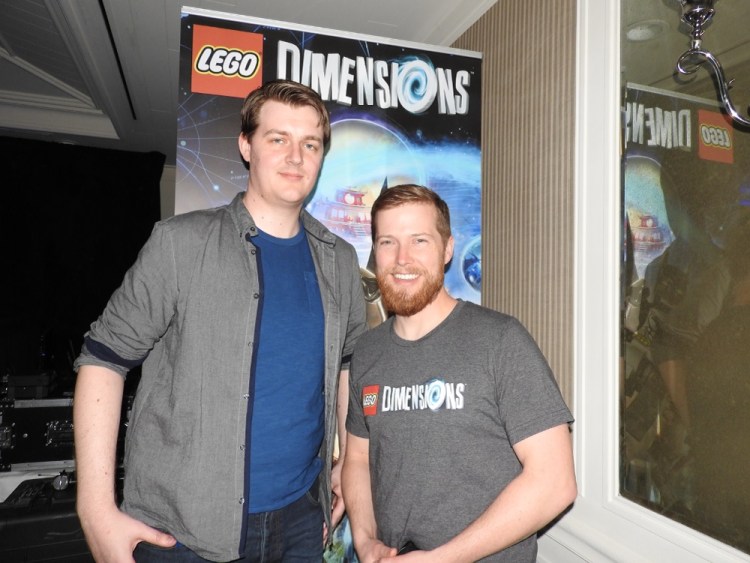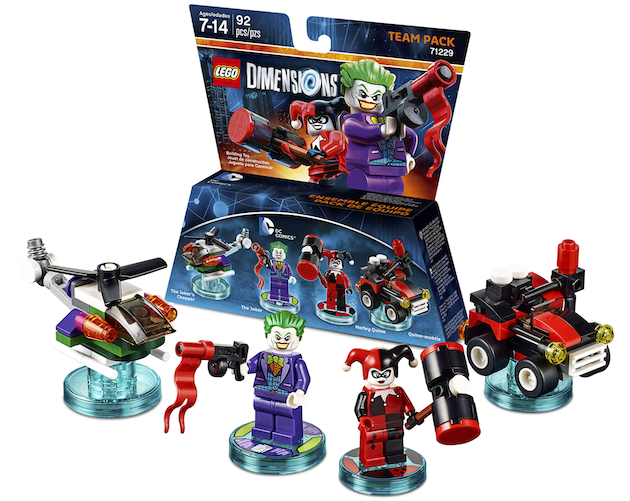GamesBeat: The Lego Movie had this cross-brand story in it as well. I wondered if that broke some ground for you guys to do more of that.
Heder: Absolutely. As we mentioned, John was an executive producer on the Lego Movie. That’s a testament to his work and creative vision for Lego as this property that was kind of uniquely situated to do that, to bring all these disparate brands — what’s the one thing they have in common? They all have Lego bricks in common. Something like the Simpsons and Doctor Who and Batman, these are worlds that never touch each other’s space. But in Lego they do. They’re all part of the same system.
The movie definitely cemented something we all understood intuitively, something that we could already do with our toys. That made the conversation with all the partners much easier. I suppose if that movie had been a flop it would have been more difficult, but it wasn’t. It was a huge success. It was much easier to say, “Hey, yeah, what you saw in that movie, we want to kind of do it, but maybe a hundred times more?”
We wanted to bring all these properties together and mash them up in a meaningful way. Not just characters, but whole worlds. What does it look like when Gotham City or Metropolis is invaded by an army of orcs from Lord of the Rings? You could never do that before. Now we can. We get to do all those what-if scenarios. Suddenly it makes sense if Gollum and the Riddler have a showdown.
Warburton: Well, it still doesn’t make sense. But that’s what makes it fun.
Heder: When I watch my children play with toys, though, they do that. They intuitively get what it is that makes that character who they are. That can cross over to any world they want to imagine that character in. Fans have been doing this—You go on YouTube and look at machinima videos and animation, you see things like Batman versus Darth Vader. People already, in their minds, have thought of these crossovers. Now we’re just bringing that to life in a bigger way.
GamesBeat: It seems like you’re tying that together with good humorous writing.
Warburton: I’ve worked with these guys for years. I have to say, I still laugh at the cutscenes. I still get a kick every time I see what they do. They’re incredibly talented. They’ve created this incredible story that helps tie everything together. It’s brilliant. Very funny.
GamesBeat: Everyone so far has said this is the biggest and best project you’ve ever made. How do you get there? I’m curious about how hard it is to commit to something like this and get your arms around it.
Heder: There’s a lot of belief in TT Games. They have one of the best track records in the industry. They’ve been producing hits for 10 years. I can’t think of many other companies that have produced the number of titles they’ve made in the number of years they’ve made them in that have stayed relevant in the public eye.
This is a natural evolution of their genre. They invented the cooperative family play space. There’s a lot of trust in TT Games. This is a very exciting project by itself, but Warner was definitely more willing to make that size of investment with a tested and beloved company.
The saying goes, if you don’t do it right and you don’t do it big, then don’t do it at all. If you want to compete in today’s space, you have to put it all out there, take all the risk. Warner Bros. is doing nothing short of that. They absolutely are committed to seeing this thing become a success.
Warburton: The cool thing is, it’s a system. With this game we have the potential to just keep going. It doesn’t just end after a year. We want to keep going and getting stronger. That’s the commitment, the investment. It’s very exciting when you can keep looking forward. We have something incredibly special on our hands here.
Heder: That’s the system John envisioned, a modular gaming system where you can pick and choose the content you want to add to that core experience and build for years and years, based on whatever the player wants to do. It’s up to us to offer as much as we can and let them decide what to do with it.
Warburton: People on the forums are always asking us things like, “Can we ever get a Lego Back to the Future game?” Well…maybe? This gives us an incredible way of providing those experiences that may not have survived a full 20-odd-hour game. It’s so expansive. Of course, we say things like, “It may not need a full game,” but if you look at the amount of content in each level, you’d be surprised.
GamesBeat: Were you working on this game alongside some of the other Lego games you’ve done? Has it been running in the background for a while?
Warburton: We have a very flexible and passionate team. We always have multiple projects at different stages. It’s incredible to watch them. They can switch from one to the other really fast. There’s a clear and concise structure that comes from the top. Everyone knows what to do. Everyone’s driving toward that one goal.
Each game is just as special as the next one. Dimensions may be sort of the Nth degree, but that doesn’t take away from Lego Jurassic World. I don’t know if you’ve seen that, but it’s absolutely fantastic. TT Games will continue to strive to make every title they produce as good as possible.
GamesBeat: The market has quite a few lines of these toys out now. What can we expect to be different here?
Warburton: No disrespect to anyone else whatsoever, but we are the only true toy-to-life offering. We’re actual Lego minifigs, actual Lego bricks. It’s your toys that are coming to life in the game. All our competitors don’t have that same offering. That’s special. It makes our game unique. As soon as you switch it off, you can take your figures and your build and mix them up with all the rest of your Lego collection. Then, when you’re done, you pull them out and go straight back into the game again. It’s up to you.
GamesBeat: You could have some kind of Incredible Hulk character and put him in the Batman slot.
Warburton: Well, he won’t necessarily show up. Not yet, anyway.
GamesBeat: It doesn’t have to look how you’ve scripted it to look.
Heder: Right. But that’s the beauty of it. People get that with Lego. There are so many unspoken non-rules of Lego play. “Rules” wouldn’t be right word, because we break the rules.
GamesBeat: There’s almost a user-generated aspect to this.
Heder: Definitely. I hope to be surprised. I think we’ll see the fan service come out. What does your gateway look like? People can take those bricks and reassemble them into some new design, or add their own bricks and come up with all types of inventions. I fully expect that we’ll see that culture developing.
Warburton: It’s very exciting, because we’re offering so many different brands and IP. Every time someone sees it for the first time, the response is always overwhelmingly positive. When we’ve done this before and we show something like Scooby-Doo, everyone’s excited to see that. When it’s actually released to the public and people share videos on their consoles and they’re all over YouTube, we’re going to see a whole new brand and culture explode. And we’ll sit back smirking and say, “You ain’t seen nothing yet.”
VentureBeat's mission is to be a digital town square for technical decision-makers to gain knowledge about transformative enterprise technology and transact. Learn More



